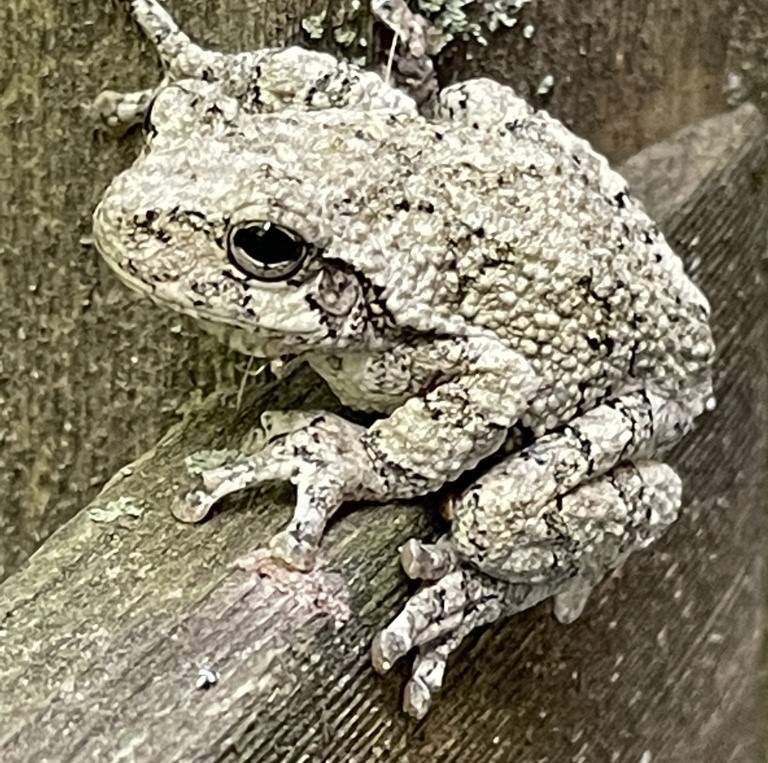Gray tree frog calls and sounds are among the most common in the Eastern United States. Their sounds are pleasant soundtrack to many spring and summer evenings.
Gray tree frogs vocalizations are one (well, two really, continue reading…) of about 30 tree frog sounds in the United States, and one of about 100 frog and toad calls.
These calls are unique, however, in that gray tree frog sounds are actually made by two different species: the Eastern Gray Treefrog (Hyla versicolor), and Cope’s Gray Treefrog (Hyla chrysoscelis). These two species are visually identical and can only be told apart by genetic analysis — they were actually assumed to be the same species until several decades ago.

The only way to tell the two species apart in the field is by their mating calls. And even then, because speed of tree frog sounds vary depending on temperature and other environmental factors, one can only be absolutely certain of the species if both are heard in the same region under similar conditions.
What do Eastern Gray Tree Frogs sound like?
The advertisement call of the Eastern Gray Treefrog (Hyla versicolor) is a musical trill that lasts about half a second and is repeated every few seconds. The pulse rate (speed of the call notes) is signficantly slower than Cope’s Gray Treefrog if both frogs are calling in the same temperature. Check out an example in the video below.
What Do Cope’s Gray Tree Frog Calls Sound Like?
The mating call of the Cope’s Gray Treefrog, in contrast, is a trill that sounds harsher than the call of the Gray Treefrog. The pulse rate is faster compared to the Gray Treefrog when both are calling in the same area at the same time. To get a sense of the difference, check out the video below.
When do Gray Tree Frogs call?
Gray Tree Frog sounds are primarily heard during their breeding season, which starts in spring and can continue throughout summer. In general, this season goes from late April to as late as July or August, depending on location.
It’s usually possible to hear a few males start singing from wooded areas when warm weather arrives. After a week or so, these males move to vernal pools or ponds to breed. They form groups (called choruses) and call together, predominantly at night, though they can be heard during the day at times. These calls usually begin shortly before sunset and can continue for two to four hours.
Apart from their breeding calls, Gray Treefrogs also make calls outside of the breeding season from high up in the tree canopy. These calls are often heard before or during rainfall or on cloudy days and are known as “rain calls.”
Where do Gray Tree Frogs Call From?
Gray tree frogs, like all species in the tree frog family, have enlarged toe pads that allow them to climb more easily. Thus, it’s typical for male gray treefrogs of both species usually call from high up in trees during the daytime and then descend to the ground at night to mate.
Males gray tree frogs call from the same general area throughout the breeding season, but not necessarily from the same exact spot every night.
In areas where their ranges overlap, one type of gray treefrog (H. versicolor) calls from higher up in the trees than the other (H. chrysoscelis).
References
This sound guide draws from several sources, including several AmphibiaWeb and Animal Diversity Web, The Frogs and Toads of North America (2009) by Elliott, Gerhardt, and Davidson and Frogs and Toads of the United States and Canada (2013), by C. Kenneth Dodd.
